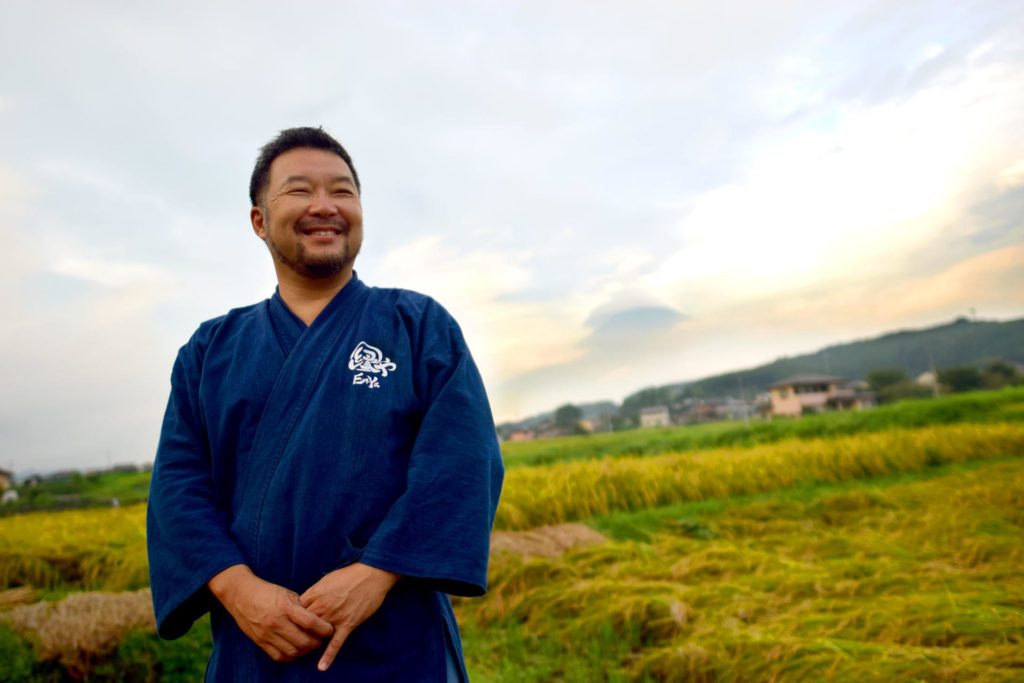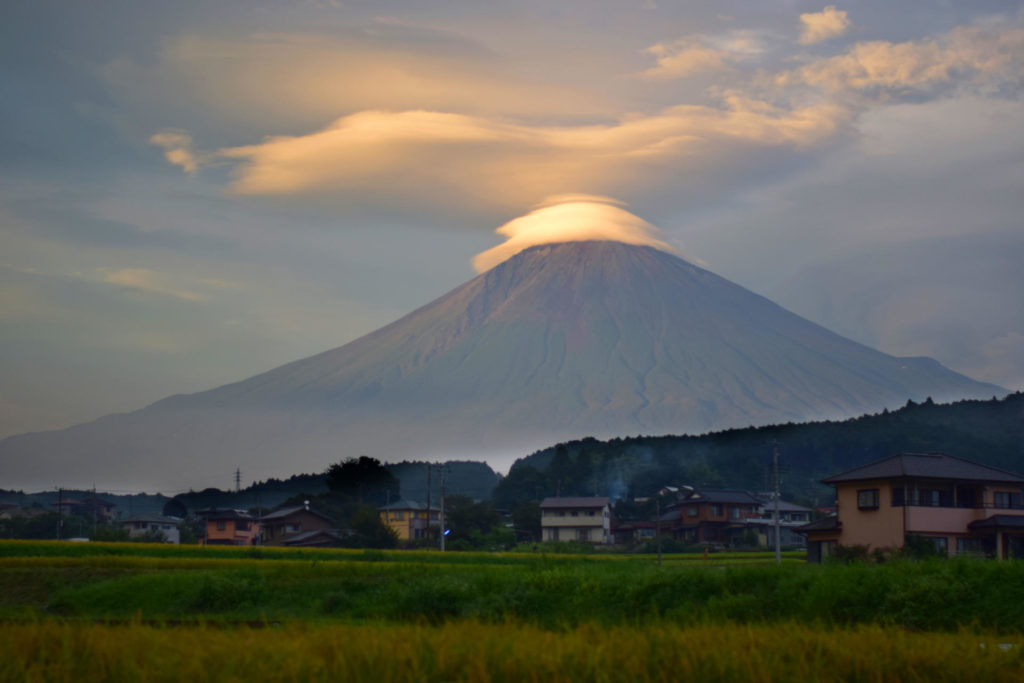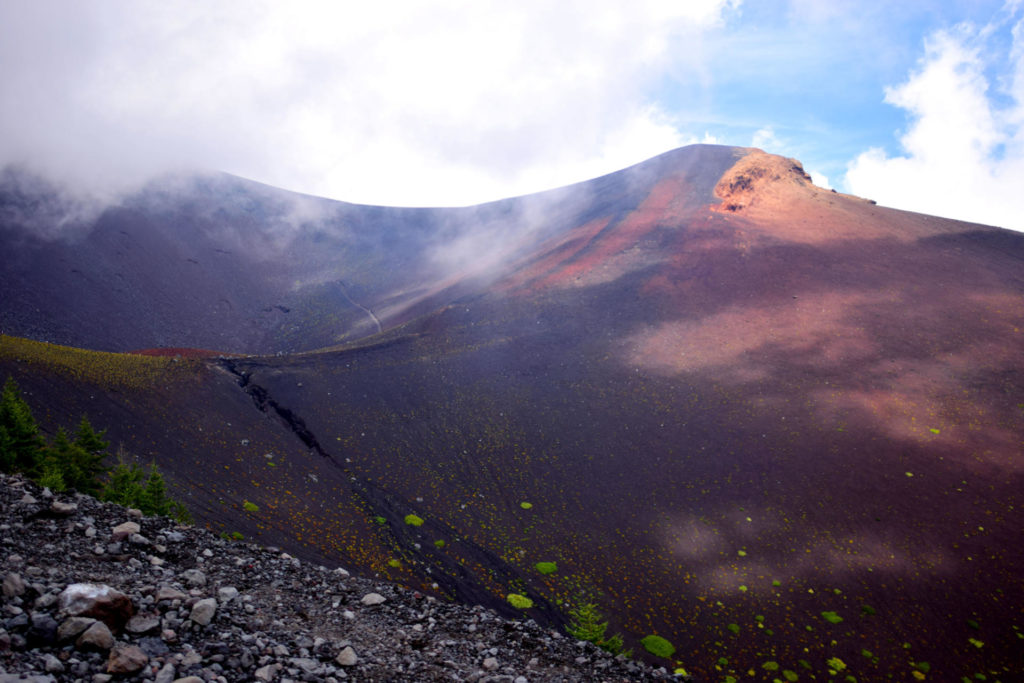Growing up in Kobe, Masanori Shintani was surrounded by nature lovers. Nearly everyone in his family was a boy scout or cub scout. His grandfather was a volunteer guide and weekends were spent camping at Mt. Rokko. When he was eighteen, Shintani achieved the highest honor a Japanese boy scout can receive—the Mt. Fuji Scout Award—which came with an invitation to meet Crown Prince Naruhito at the Imperial Palace.

“This was one of the best moments of my life. Mt. Fuji has so much meaning to me and, from that moment, I wanted to live near this mountain,” Shintani says.
After high school he selected a university in Shizuoka Prefecture solely due to its proximity to Mt. Fuji. One day while scuba diving off the Izu Peninsula, he spotted trash polluting the bottom of the ocean.
“I knew I had to do something to save the environment,” Shintani says. “But this was nearly 30 years ago during the bubble years and there were very few jobs relating to protecting the environment.”
To make matters worse, wealthy Japanese were buying properties overseas while disregarding local businesses and littering natural landmarks and parks. Although Shintani was studying applied chemistry, he realized to make a difference, the first step was to change people’s attitudes. At 24-years-old, he moved to Florida to pursue his masters degree in environmental studies.
“My professor told me about ‘ecotourism’ and although I didn’t know precisely what it was, it sounded exactly like what I wanted to do,” Shintani recalls. After completing his studies he sent out nearly 600 internship applications to ecotourism companies and nature parks all over the world, but with no response, he nearly gave up. Yet sometimes inspiration strikes when you least expect it.
“I was at a friend’s place in San Francisco, about to head to my final interview to accept a job with Mitsubishi and had a stomachache,” Shintani laughs. “Then I found a newspaper in the bathroom and started reading it. There it was, in big bold letters: ‘Outdoor Festival,’ and in smaller print below, ‘Ecotourism.’” Shintani cancelled his interview and ran to the festival, arriving just half an hour before it finished. After finding language errors on the Japanese brochures of an ecotourism company called Hawaii Forest & Trail, he was hired on the spot. Before he knew it, he was on a plane to Kona, promoting outdoor tours and bringing in busloads of Japanese visitors.
After six years overseas, Mt. Fuji still remained on Shintani’s mind. He returned to Shizuoka with his college sweetheart and soon found a job with a nature school in Fujinomiya City, then moved to the idyllic Yuno Village. In 2007 he launched Ecologic, a company dedicated solely to developing tourism that benefits, educates and empowers local communities all over the world.

Shintani explains how creating tours can be a sensitive issue. “If you start a business that brings in the right kind of travelers—people who respect locals and are aware of the environment—then it’s great. But if you’re focused only on money and expanding your own business without consulting with locals, it will backfire.”
The Japan International Cooperation Agency projects send Shintani all over the world to places like Gabon to save jungle gorillas, and Iran for rafting tours, yet Fujinomiya remains his primary focus.
“Every time I make tours for a new location, I see myself as a catalyst, an outsider. Most ecotourism projects operate the same way: experts come, do their job then leave without educating the community and then the project ends there. It’s not sustainable,” he says.
“Fujinomiya is different. I’m not from here, but it is my children’s hometown. I have to work hard to keep this town sustainable for my kids, family and friends. This is a project I’m dedicated to until I die.”
Ecologic has been working with Fujinomiya City’s businesses to highlight cultural and outdoor points of interest, promote local arts and make services English-friendly, including teaching taxi drivers English. Started in Spring 2017, Ecologic launched “En-Ya Ecotours,” customizable day tours introducing inbound visitors to a more authentic side of Shizuoka.
Activities include cycling past Yuno Village’s fields, temples and thatched houses, cooling o at the majestic Shiraito Falls, hiking to Hoei Crater on Mt. Fuji, making soba—complete with an 100% organic and local, farm-to-table lunch—creating traditional Japanese wagashi sweets and strolling the shoutengai (traditional shopping streets) and Mt. Fuji Sengen Taisha shrine grounds in a yukata. Vegetarian and halal meals are available as well. Tour proceeds help support local vendors.

Book a Fujinomiya Experience with En-Ya Ecotours.
EXPLORING FUJINOMIYA
Fujinomiya City is the traditional gateway to Mt. Fuji, with many visitors starting their ascent from the Fujinomiya Fifth Station. Sitting on the southwestern slopes of Mt. Fuji, Fujinomiya offers plenty of outdoor activities as well as cultural and culinary experiences in the heart of the town. The shoutengai around Fujinomiya Station feature ryokan (traditional inns) with impressive views of Mt. Fuji and a ordable guesthouses. Travelers can enjoy Fujinomiya’s famous yakisoba stalls or drop by trendy cafés and bars. The town is built around Fujisan Hongu Sengentaisha Shrine, which dates back more than 2,000 years.
Shiraito Falls
Shiraito Falls translates to “White Thread Falls.” Although only 20 meters high, the spectacular 150-meter-wide falls cascade off cliffs in thin white streams. Shiraito is hidden in the foothills of Mt. Fuji in the Fuji-Hakone- Izu National Park yet accessible from a short walking trail and just a 30-minute bus ride from Fujinomiya Station.

Mt. Hoei
Though Mt. Fuji’s summit trail is officially closed after summer, you can still hike up Mt. Hoei on the southeastern side of Mt. Fuji. Mt. Hoei’s craters formed after the last eruption in 1707. The light hiking course takes you across a landscape starting from the Fujinomiya 5th Station to the rim of the crater, which is twice the size of the summit’s crater. You can walk down to the bottom of the crater or climb the 2,693-meter Mt. Hoei. A loop-line hiking course o ers you a chance to walk in a primeval forest on your way back to the station. Early autumn is the best time to hike. Be sure to check trail conditions before you go.

Yuno Village
Fujinomiya is blessed with pure spring water from Mt. Fuji, with four sources spread out around town. The sound of the Shiba River, which runs through Yuno Village is a constant companion. The village is an 18-minute drive from downtown Fujinomiya and its idyllic view of Mt. Fuji surrounded by rice paddies and thatched houses is best explored by bicycle.
Fuji Nishiki is a 330-year-old sake brewery producing 230,000 liters of sake annually using Mt. Fuji water. Every third Sunday in March, the brewery holds a festival giving away 8,000 liters of free sake. Asagiri Plateau is a lava field with a broad grass prairie popular for paragliding, dairy farms and the popular Asagiri Jam music festival held in October.
Getting There
From Tokyo Station to Fujinomiya Station on the JR Minobu Line takes about two hours by train. If you are driving, take the New Tomei Expressway towards the Nishi Fuji Road. Buses are available from Fujinomiya Station to Shiraito Falls, Fuji Five Lakes and Mt. Fuji’s Fujinomiya Fifth Station.




